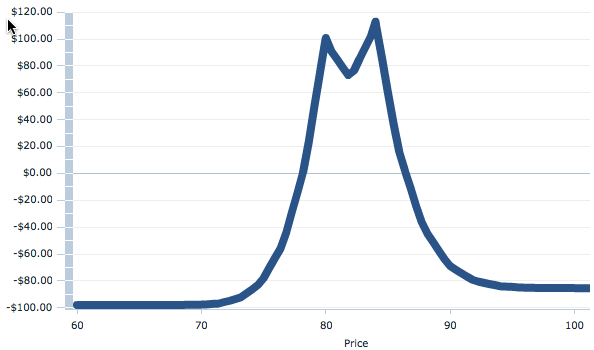Double Calendar Spreads are a type of debit spread that results in a strategy that is delta neutral, positive theta, and positive vega. Like an iron condor, this strategy is best applied when you believe the underlying won't move much / is range bound. However, unlike an iron condor, this strategy increases in value with an increase in volatility.
A Double Calendar spread involves buying and selling call and/or put options with different expirations, but the same strike price with the intention of capitalizing on the differing rates of time decay on the two legs of the spread.
Example of a Double Calendar:
- Buy 1 XYZ Jan $80 Call @ $4.35
- Sell 1 XYZ Dec $80 Call @ $3.85
- Buy 1 XYZ Jan $84 Call @ $2.10
- Sell 1 XYZ Dec $84 Call @ $1.62
Net Cost = $0.98 per contract

Your maximum profit for this transaction is about $0.75 per contract if you hold it until expiration and the stock stays between $80 and $84.
A Double Calendar is a delta neutral strategy with positive theta and positive vega. The result is a strategy that profits: a) when the underlying stays relatively flat and remains between the short strikes by expiration; b) with the passage of time; and c) as volatility increases.
Due to the strategy's positive theta, you make more and more money as each day passes. However, like any delta neutral trade, an upward move in the underlying results in a net negative delta; and a downward move results in a net negative delta. So, in order to increase the odds of profitability and reduce risk, you must make adjustments when the delta becomes either too positive or too negative.
